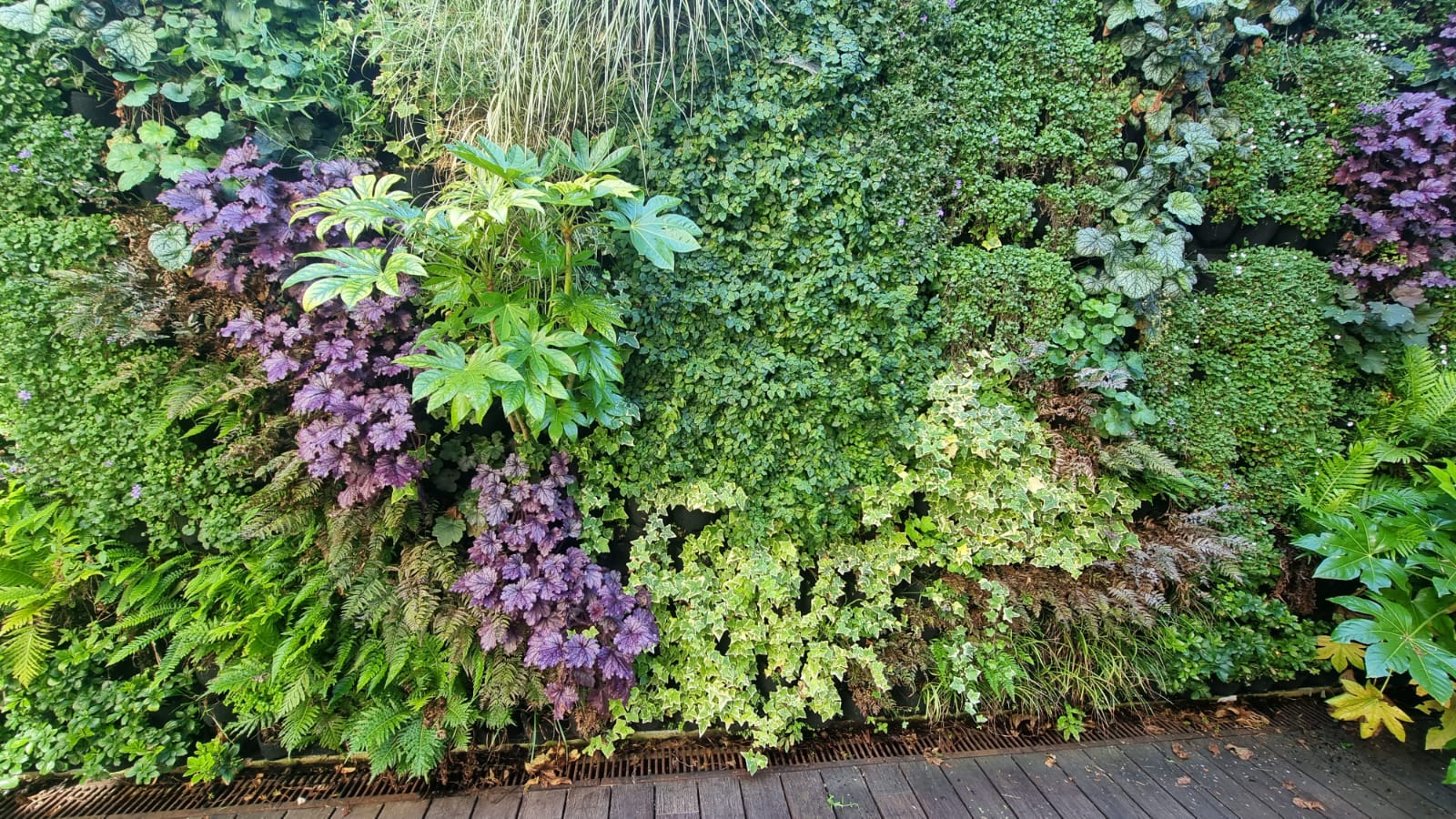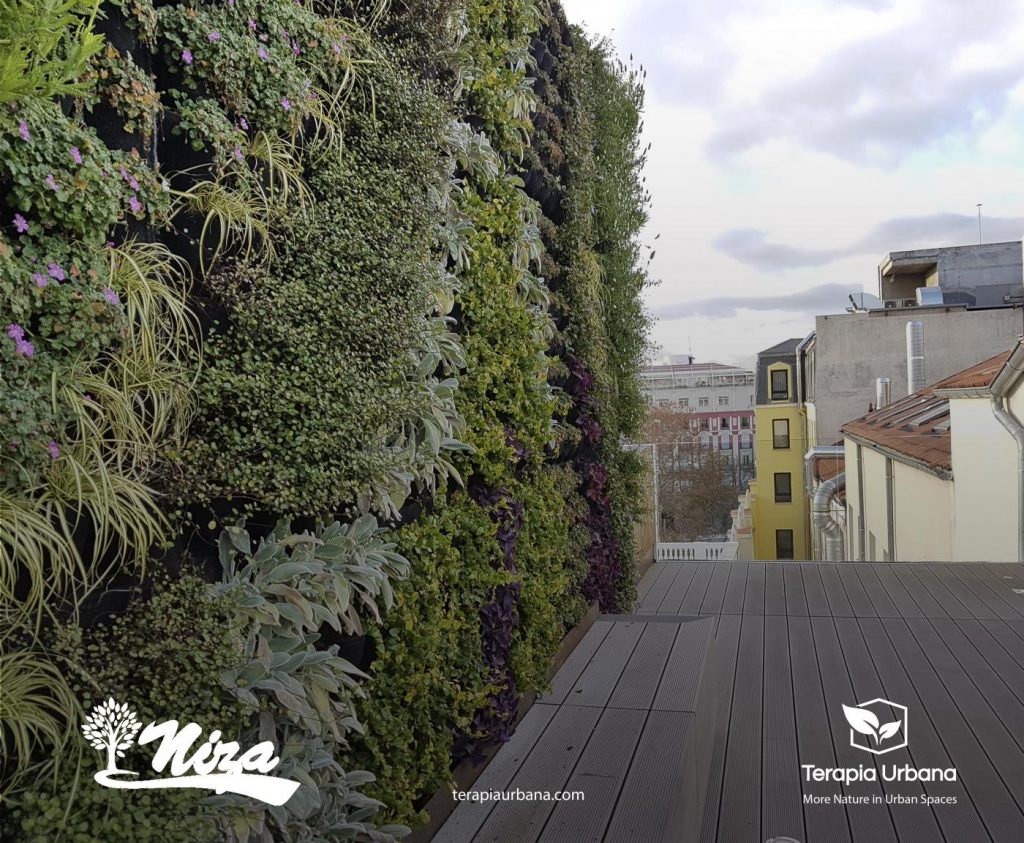The population growth in the urban area, the development and modernity of the cities that are accompanied by cement and housing infrastructure, this causes that the green areas and forests are increasingly smaller, with the consequent decrease in air quality.
An alternative to the lack of space for garden design and reforestation is the construction of vertical gardens, making the walls of buildings and facades an appropriate place to grow different types of ornamental, aromatic, medicinal plants, even gardens.
This architectural trend is becoming more common.
Benefits in the environment
One of the advantages of vertical gardens is the creation of microclimates that benefit the environment in the face of the lack of green areas in cities, in addition to reducing the temperature and protecting against humidity.
Vertical gardens oxygenate and green the environment, providing countless benefits in cities… it is a perfect way for urban greening.
The incorporation of vegetation in urbanization projects improves the quality of life of people, since it provides the atmospheres of urban centers with cleaner air, being beneficial to prevent respiratory diseases and to alleviate those who suffer from them.
The smells given off by the gardens also have a positive impact on the brain and the landscape activates and encourages outdoor activities, which can be positive for increasing environmental awareness.
Fortunately, the integration of nature in urban centers is becoming more common, not only as decorative elements but also acting in symbiosis with the other elements of the environment, allowing the improvement of people’s quality of life and valuing natural elements as essential.
Oxygenation of the environment
Plants in a vertical garden filter particles from the air and convert CO2 into oxygen.
1 m2 of green façade extracts 2.3 kg of CO2 per year from the air and produces 1.7 kg of oxygen. With a vegetal façade it contributes to the purification of the air.
Likewise, plants absorb sunlight, absorbing 50% and reflecting 30%. This helps create a cooler and more pleasant climate.
On the one hand, having a vertical garden indoors means 33% less air conditioning, a clear energy saving. On the other hand, regarding the outdoor garden, they have a positive effect on the heat island effect* of the city. With this we want to reflect a decrease of up to 3 degrees Celsius in the temperature of the city.
*The Effect of the Urban Heat Island (hereinafter ICU) is a well-known phenomenon in large cities, this consists of urban centers experiencing higher temperatures than their surroundings. …Essentially all urban areas around the world experience the ICU effect to varying degrees


